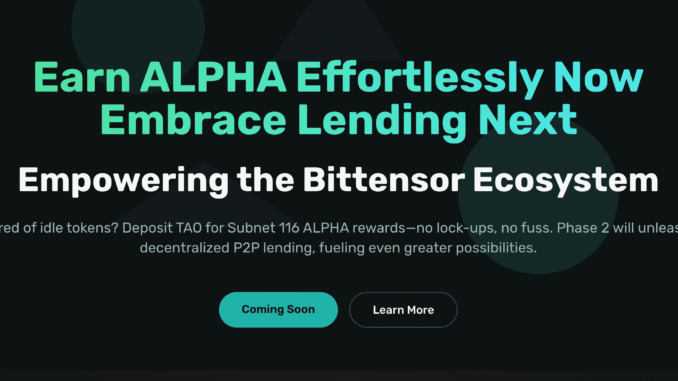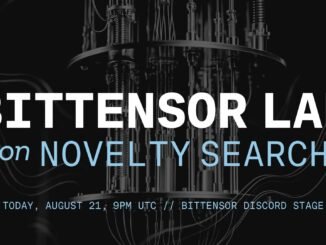
TaoLend is an innovative decentralized lending protocol built as a Bittensor subnet (Subnet 116), designed to bridge the gap between Bittensor’s native staking mechanisms and decentralized finance (DeFi).
By integrating with the TAO-EVM ecosystem, TaoLend enables users to lend and borrow TAO tokens while keeping subnet ALPHA staked, thereby enhancing capital efficiency, liquidity, and overall network security within Bittensor.
Purpose and Core Functionality
TaoLend addresses a key challenge in the Bittensor network: the illiquidity of staked ALPHA tokens. The protocol allows ALPHA holders to collateralize their stakes and borrow TAO without unstaking, unlocking liquidity for ecosystem growth.
This creates a symbiotic relationship where lenders earn competitive yields from interest and staking rewards, while borrowers access TAO for trading, development, or other uses. The subnet’s design incentivizes participation, rewarding miners and validators based on deposit volumes and market dynamics, ultimately adding value to the entire Bittensor network.
Key Features
TaoLend stands out with its user-centric and secure architecture:
- Point-to-Point Lending: Direct peer-to-peer interactions between lenders and borrowers, bypassing intermediaries.
- Flexible Interest Rates: Lenders can dynamically set rates based on supply-demand conditions.
- Permissionless Access: All transactions execute via audited smart contracts on the EVM, requiring no approvals.
- Seamless Integration: Combines Bittensor’s subnet staking with EVM compatibility for smooth cross-chain operations.
- Incentivized Rewards: Users earn dual income streams—staking yields plus lending interest—while maintaining ALPHA in subnets.
How It Works
TaoLend unfolds in phased development, starting with a bootstrap lending pool (Phase 1) where users deposit TAO and ALPHA into a shared pool. This pool supports flexible withdrawals and ties rewards to Subnet 116’s expansion.
In Phase 2, the protocol shifts to full P2P lending: Lenders deposit TAO, set terms like interest and duration, and issue signed offers. Borrowers then use over-collateralized ALPHA to secure loans, with mechanisms for early repayment, automated liquidation on defaults, and transparent on-chain tracking to protect all parties.
Miners and validators power the subnet, handling operations like wallet binding, deposits, and weight calculations based on collateral values. The system emphasizes non-custodial security, with features like multi-signature controls and continuous monitoring to mitigate risks.
How To Get Started
Built with NodeJS, PM2, and EVM smart contracts, TaoLend is only accessible via CLI at the time of this writing. Team promises the release of a user-friendly GUI on the TaoLend website.
Prerequisites for mining include a Bittensor-compatible wallet and basic EVM knowledge. Security is paramount to TaoLend, featuring audited contracts, over-collateralization (to buffer defaults), and permissionless transparency.
Future Outlook
As Bittensor evolves, TaoLend’s roadmap promises deeper DeFi integrations, potentially expanding to multi-asset lending and advanced risk models. By fostering liquidity without compromising security, TaoLend not only empowers $TAO holders but also strengthens Bittensor’s economic foundation.




Be the first to comment